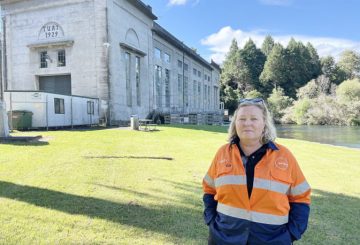EUの気候局によると、2024年2月は記録上最も暖かい2月でした。9か月連続で記録的な気温を記録しました。2023年6月以降、各月はそれぞれの時期に新たな最高気温を記録しています。
世界の海面も史上最高気温で、南極の海氷はきわめて低いレベルに達しています。太平洋のエルニーニョ現象がこれらの気温の一因となっている一方で、人為的な気候変動が主な原因です。
世界気象機関事務局長のセレステ・サウロ教授は、「熱を閉じ込める温室効果ガスが主な原因です」と述べています。二酸化炭素レベルは少なくとも200万年ぶりの高水準にあり、過去1年間で大幅に増加しています。
これらのガスにより、2024年2月は、人間が大量の化石燃料を燃焼し始める前よりも約1.77℃暖かくなりました。この気温は、2016年の過去の記録を約0.12℃上回りました。特にオーストラリア西部、東南アジア、アフリカ南部、南米では暑さが厳しかった。
過去 12 か月間の平均気温は、産業革命前のレベルを 1.56 度上回りました。2015年、約200か国が、気候への深刻な影響を避けるため、世界の気温上昇を1.5℃未満に抑えることに合意しました。この閾値はまだ超えていませんが、記録的な気温が続いていることは、世界がそれにどれだけ近づいているかを示しています。
気温に加えて、他の気候指標も記録的なレベルに達しています。その一例が海面水温です。この海洋熱の上昇は、エルニーニョ現象だけによるものではなく、過去10か月間一貫して高い状態が続いています。これはサンゴ礁の大量白化、海面上昇、より激しいハリケーンにつながる可能性があるため、懸念されています。
2023年から2024年にかけて発生したエルニーニョ現象は、記録上最も強かった5大イベントの1つですが、徐々に弱まりつつあります。今後数か月間は気温と気象パターンに影響を及ぼし続けますが、4月から6月にかけては中性状態になり、6月から8月にかけてはラニーニャと呼ばれる涼しい時期に移行すると予想されます。これにより、世界の気温が一時的に下がる可能性があります。
しかし、人間の活動によって大量の温室効果ガスが放出され続けると、長期的には気温が上昇し続け、記録的な気温上昇や異常気象につながります。インペリアル・カレッジ・ロンドンの気候科学の上級講師であるフリーデリケ・オットー博士は、「化石燃料の燃焼をやめ、より持続可能で再生可能なエネルギー源に置き換える必要があります」と述べています。「そうしなければ、気候変動によって激化する異常気象は、人々の生活や生活を破壊し続けるでしょう。」




























































